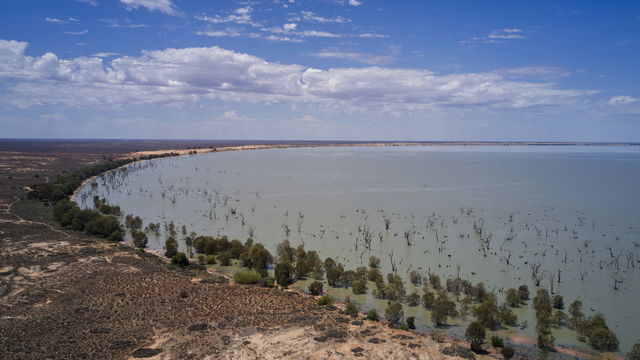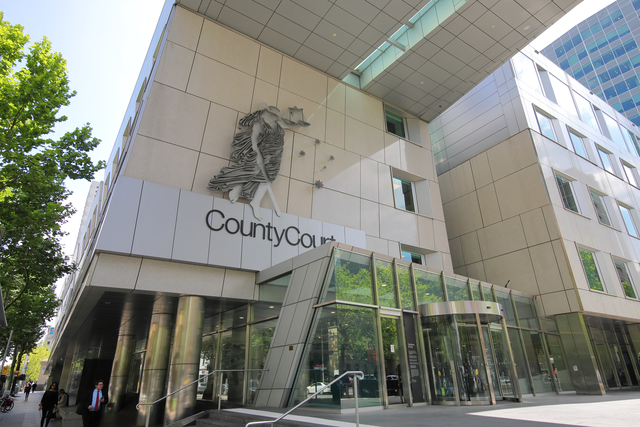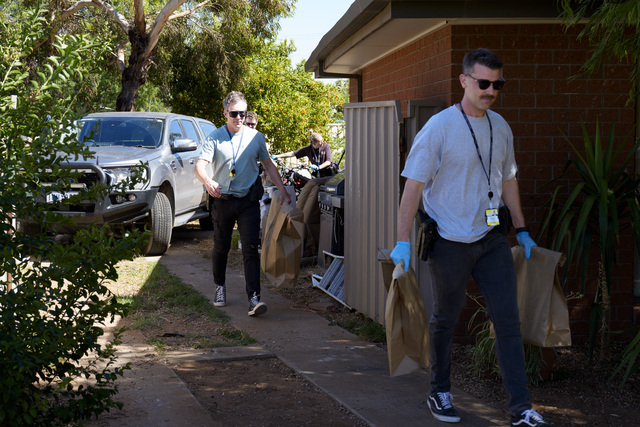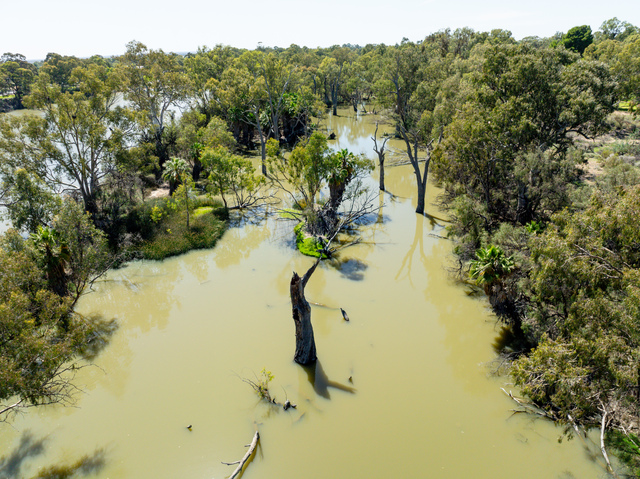A silver grotto studded with gaudy glass tubes, the digestive system brought to life and a dark rectangular room punctuated by sharp sounds and strobe lights are some of the things waiting for you at MONA, the Museum of Old and New Art. Jessica Cornish spends a day exploring the quirky museum located just outside of Hobart and learns a few things along the way. Picture: MONA Museum of Old and New Art, Hobart, Tasmania
PERCHED high above the River Derwent and enveloped by manicured green lawns and a miniature vineyard, you will find the quirky and wonderful Museum of Old and New Art (MONA).
MONA is the long-term pet project of local Tasmanian celebrity, David Walsh, who made his fortune pursuing a career as a professional gambler.
This museum has become a must-see when visiting the state.
In fact, it was the number one destination on my Tassie bucket list.
I had organised a shuttle bus to collect my partner and I from the Hobart airport, which took us directly to the museum upon arrival.
However, for those who enjoy the sea and a drink, for about double the price you can be ferried up the river in a camo-patterned boat.
I chose the cheaper option and stuck with the shuttle bus. Funnily enough my partner and I were the only ones aboard the black shuttle bus that day.
Walking into the museum, you quickly forget the time of day as you fall into MONA’s somewhat dark and unusual interior.
Where you begin is up to you.
If you start at the bottom of the museum you will find the permanent collection of art, which includes Sidney Nolan’s iconic rainbow snake interpretation that is depicted across 1620 panels, or you can journey further into the soul of the Earth and explore the rotating exhibits.
We chose to start the journey underground; Mine was the title of the exhibit and as the name suggested it replicated a mine.
‘Mine’ explored humanity’s increasing over reliance on the machinery and technology that has enabled people to guzzle the Earth’s resources faster than ever.
The underground exhibit also reflected on how technology is eroding human-to-human relationships and interactions.
The exhibition was curated by New Zealand artist Simon Denny, who explained on the MONA website that the current exhibit “revolves around mining as a reflection of hope and anxiety about the environment, technology, and development.”
Throughout the exhibit, we were provided an iPhone that dangled around our necks like a chunky necklace, which used augmented reality to follow the story of the King Island brown thornbill.
This particular bird is on the cusp of extinction due to human technology, industry and climate change.
However, scientists are hopeful this bird can be saved through data collection and research that utilises technology to preserve the bird.
Again, this example highlighted the ongoing tensions between technology acting as both a destroyer and saviour of nature.
The whole exhibit weaves in and out of tunnels called Siloam. With dim lights dangling from the low set ceilings, at times you feel as though you are the canary down the mine.
We slowly weaved our way out of the darkness; although it was tricky as some of the tunnels led to nowhere. Apparently Mr Walsh has yet to decide what will await at the end of these darkened walkways.
Eventually we wandered from the darkness to the lighter shades of fun.
I stumbled into the silver grotto which visitors are invited to sit in.
Designed by Randy Polumbo, the grotto has become the “selfie capital” of MONA.
Close by in stark contrast to the sparkly grotto was a silent room filled with thick black sump oil that plays with the reflection of light beams swooping in from the high ceiling above, painting criss-cross patterns of light across the dark surface.
Just do yourself a favour and don’t touch the oil, your clothes will never be the same again!
Speaking of clothes, well the absence of clothes, another rotating exhibit currently on display in the flesh was ‘Tim.’ Yes, just Tim – a former tattoo parlour manager based in Zurich, Switzerland.
Silently he sits perched on a white box, with matching white ear buds burrowed into his ears, with his back AKA his canvas facing outwards towards the audience. His back showcases an intricate tattoo created by Wim Delvoye. Following Tim’s death he plans for the tattoo to be peeled off his body and returned to the tattoo artist. This exhibit will be on display until April and then who knows what will occupy the space of Tim?
Another playful exhibit I enjoyed was Velocepedia.
This exhibit asks museum goers to draw a bike from memory.
The sketches are then placed inside a box, presumably to be added to the display at some point in the future.
I quickly scrawled my picture of a non-functional bike and wandered through to the next room displaying hundreds of bicycle sketches, some of which were pretty impressive. This room then adjoined to a space showcasing four bike doodles that had been brought to life and actually created.
The artist, Gianluca Gemini, had always been intrigued watching sketches fall from the hands of strangers and friends on to blank pages and his artistic notes explained that the principle behind the exhibit is actually a test used in psychology.
It demonstrates how humans can be certain they know something so well, such as sketching a bike, but when they attempt to draw it, the sketch falls apart!
I’m sure my bike will never make it to the point of production, however I loved my time at the wacky museum.
We found that three hours was all the time we needed to explore MONA, which included a coffee break and whip around the gift shop.
It was the perfect way to start our Tassie holiday.








